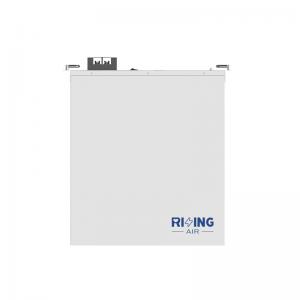

Add to Cart
A solar lithium-ion (Li-ion) battery is a type of rechargeable
batterycommonly used in solar energy storage systems. lt leverages
theadvantages of lithium-ion technology to store and
releaseelectrical energy generated from solar panels. Here are some
keypoints about solar lithium-ion batteries.
1. Chemistry: Solar lithium-ion batteries use various
lithium-basedchemistries, including lithium iron phosphate
(LiFePO4), lithiumnickel manganese cobalt oxide (NMC), lithium
manganeseoxide (LMO) or lithium titanate (LTO). The specific
chemistrydetermines the battery's performance, energy density,
cyclelife, and other characteristics.
2. Energy Storage Capacity: Solar lithium-ion batteries come
indifferent capacities, ranging from small residential systems
toarge-scale commercial or utility-scale installations. Thecapacity
is measured in ampere-hours (Ah) or kilowatt-hours(kWh) and
determines the amount of electrical energy thebattery can store.
3. Voltage: The nominal voltage of a single lithium-ion battery
cellis typically around 3.6 to 3.7 volts for most
chemistries.Multiple cells are connected in series to achieve the
desiredsystem voltage, such as 12 volts, 24 volts, or 48 volts, in
solar
power systems.
4. High Energy Density: Lithium-ion batteries offer high energydensity, meaning they can store a significant amount of energyin a compact and lightweight form. This makes them suitablefor solar applications where space is limited.
5. Cycle Life: The cycle life of a lithium-ion battery refers to thenumber of charge-discharge cycles it can endure beforesignificant capacity degradation occurs. Cycle life can varydepending on the specific lithium-ion chemistry and otherfactors, but it is generally several hundred to several thousandcycles.
